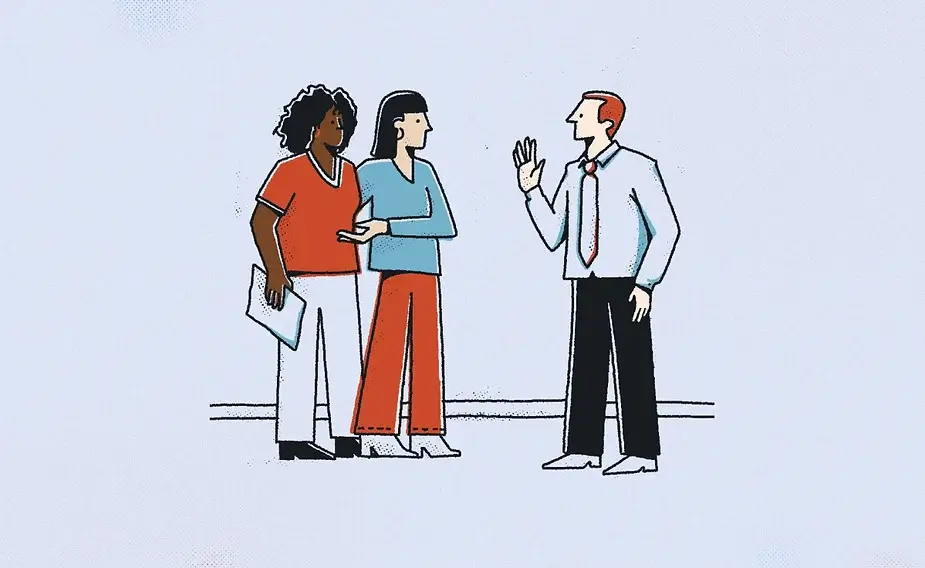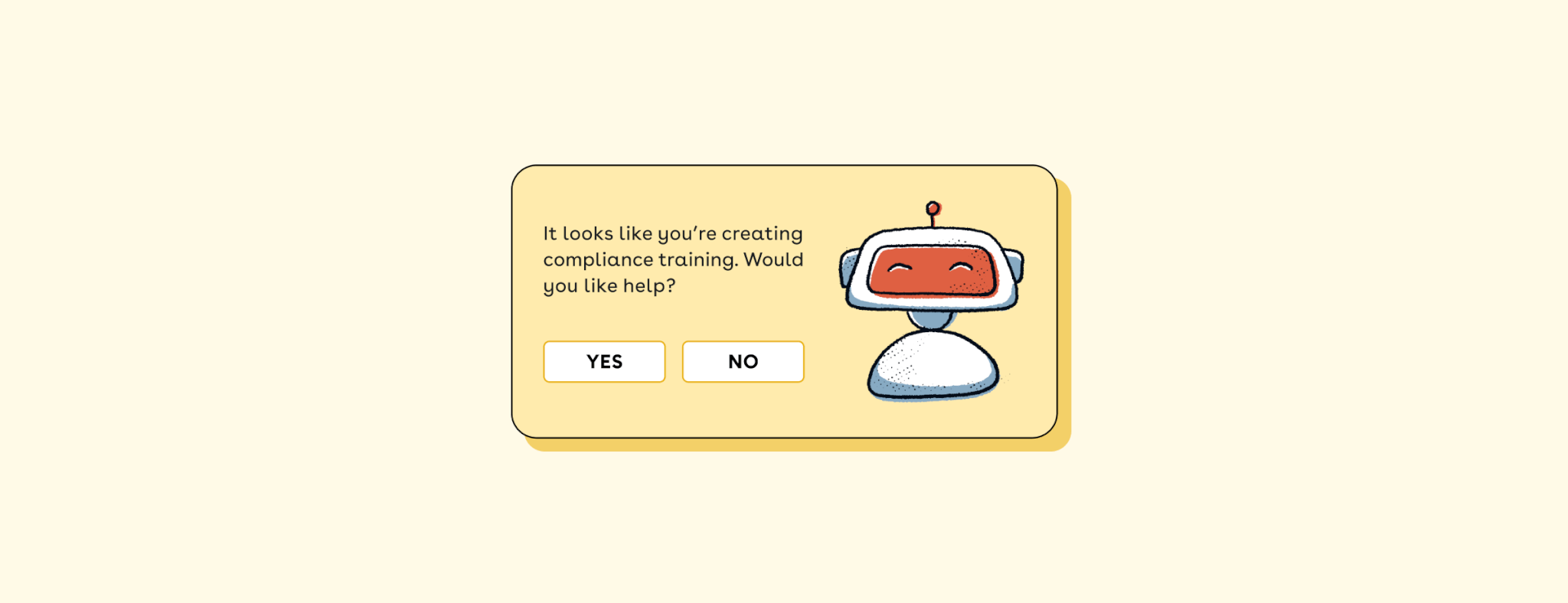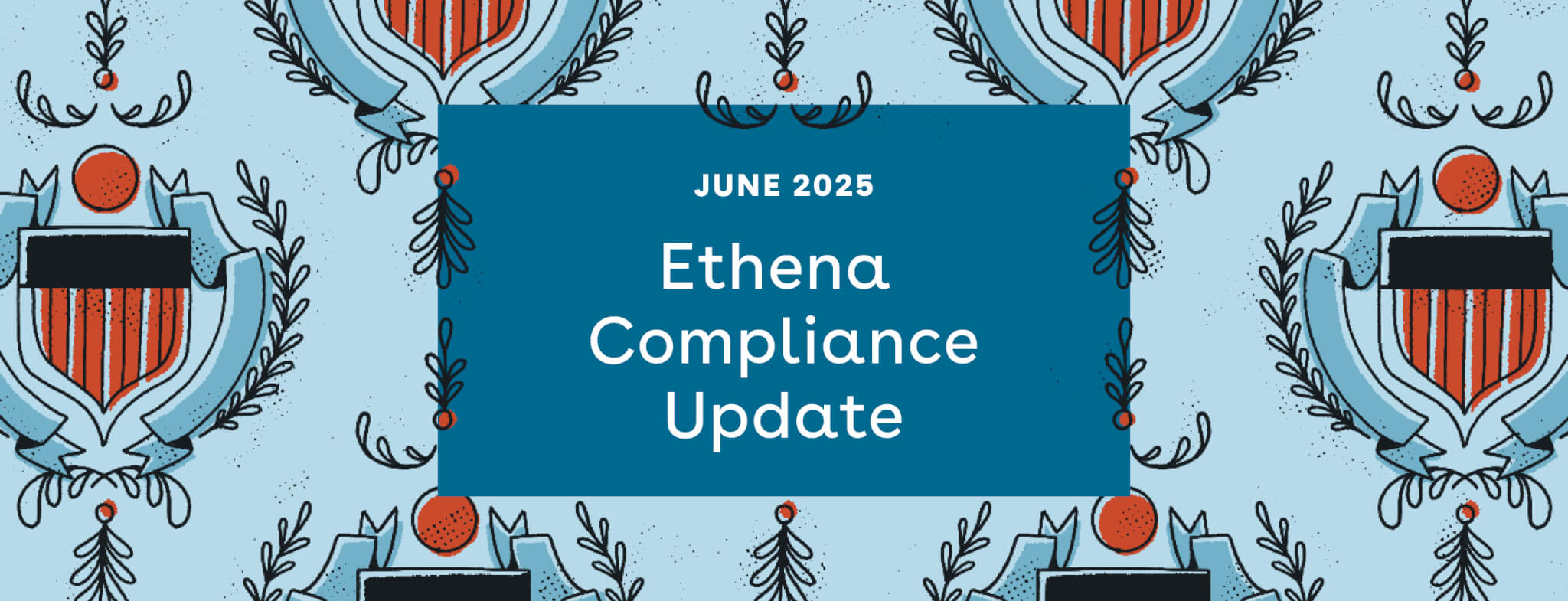At Ethena, we’ve consolidated our thoughts around diversity, equity, and inclusion (DEI) — and the role that we as a company play in working towards this goal — into a shared doc we’ve made available to all our employees.
Why? Because we believe that companies that share their thought processes with their employees open themselves up to:
- Better feedback
- Better clarity
- And better accountability across the company
After all, we already know that sharing your compensation philosophy with your employees helps improve trust and consistency; the same is true when it comes to sharing your DEI philosophy.
So we decided to take the opportunity to lean extra hard into one of the pillars we stand by in our DEI philosophy: The importance of listening to and learning from each other.
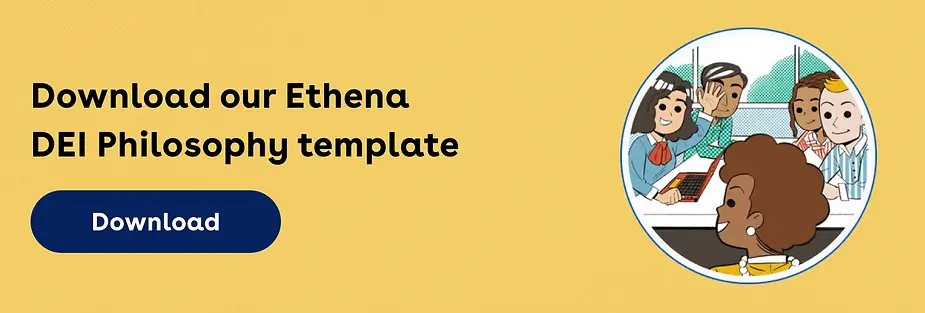
Because here’s the thing: It could be Black History Month, Women’s History Month, or Pride Month. And while many companies often feel pressured to take loud and public action during these months in order to make their commitment to DEI extra clear, the reality is, these actions — well-intentioned though they might be — can sometimes backfire. They can come across as short-lived, out-of-touch, or even *cue the cringe* performative.
So while we’ve taken steps internally to celebrate Black History Month with our employees, we at Ethena wanted to take a different approach with regard to what we put out into the world.
Instead of centering around our own thoughts around DEI, we’re taking a step back to hear from one of our employees on her experiences with DEI in the workplace. And while we know one person can’t speak for an entire community, we’re always listening to and learning from all of our employees at Ethena.
Also, before we dive in, one thing to note is that this post was not forced upon this employee. She volunteered to share her story after helping me troubleshoot why there is perceived pushback to “DEI programs” or initiatives.
Here’s what she shared.
—
By Marilyn Ehm, Content Marketing Manager at Ethena
When I hear the term “DEI initiative,” I fight back the impulse of cringing.
Let me explain.
My journey with DEI initiatives, as a Black and Asian Millenial who’s just trying to do her job in the marketing space, has been well-worn with quite a slew of interesting “asks” in the name of DEI.
And while I can’t speak for all people of Black or Asian descent — I can speak to my unique experience as a first generation, biracial woman of color who got her start with a single mom who yes, started out on welfare — but no, she later modeled an example for me of making no excuses and of pursuing the American dream to its fullest.
I speak from hefty expectations put on me by my Black family – who mostly hold higher education degrees, and was told to be a “first” at something big, too. (What that really means, in case you were wondering, is my pursuit of their approval led me to being labeled an “Oreo” more times than not by my very own “Black” community.)
So please know that my experiences are expressly my own. I’m not interested if you agree with them. I’m not interested if you disagree with them. My goal isn’t to convince you of my viewpoints. It’s just for you to listen to them and take them into consideration.
Point 1: DEI initiatives can break trust when not done right
So back to DEI initiatives, or what I sometimes call “token” initiatives (see: tokenism). Let me take you back to a previous life: I’m an individual contributor in a marketing department. I’m doing my job – writing away, helping websites have savvy copy and look splashy. You know, doing the job I was hired for.
All of a sudden, HR brought a job fair to my department’s attention.
At first, the ask was introduced as “Hey marketing, we need pamphlets, materials, and branded swag to show how we’re a great place to work for.” Got it. I can work on that. I support these efforts.
But then our DEI team became involved. All of sudden, we were flooded with other asks:
- Can the imagery on these pamphlets have more Black people on them?
- We need more women in these images for our STEM and other underrepresented roles.
- This person looks too young for this type of role, can we find an image of someone older so it doesn’t look like we only hire young folks? (To be fair, they didn’t. But the ask still occurred.)
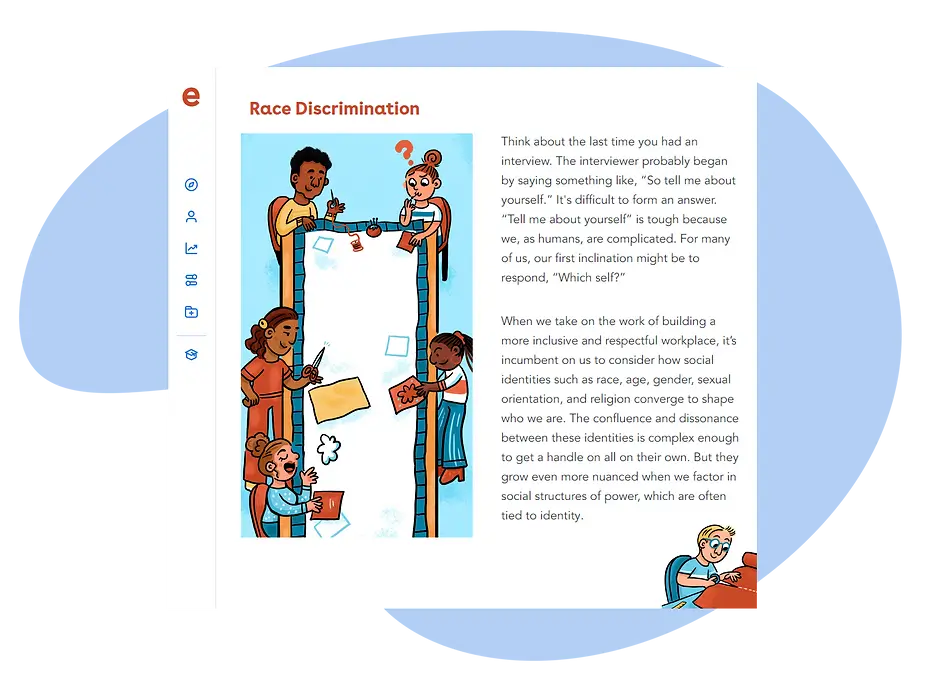
So to stay gainfully employed, my first exposure to “DEI” was searching our stock image provider for “diverse” photos. For people “who looked like me” so we could hire “more people who looked like me.”
So I deliver our diverse images, no problem. Then the next ask comes to my desk.
“Hey Marilyn, our job fair is on XX date. We think it’d be great for you to join us at the booth.”
Mind you. I love cross-functional opportunities. I love helping the bigger team. Perhaps it’s the Filipino-blood in me that loves serving others. Tell me we’re having a company potluck, and I’ll stay up til midnight and whip out 50 rolls of lumpia for the office no problem.
Also, I love helping a company hit goals because, bonuses. Yes, we got quite nice bonuses if this company hit its annual goal.
So without thinking much about it, I said: “Sure, I’d love to help!”
Fast-forward to the job fair. And the reason I was invited to help with the job fair became apparent…I was the only non-Caucasian person from the company at our booth.
And suddenly, my naivete was dashed away.
Candidates who “looked like me” walked up to me – and not to the actual recruiters. They asked me recruiting-related questions. I deferred them to my colleagues or gave them marketing-related answers, (ie did you know we’re a top place to work for according to this magazine list?)
After the event was over, I was told “Great job! We got lots of applicants and interest from communities we typically don’t get.” To which I gave a puzzled look. What did I do a good job in, exactly? Was it because I did great work, despite not knowing much about recruiting or HR? Or was it because I was just there?
Let’s talk about that DEI department some more. And I preface this with saying that I’m 100% confident there are excellent DEI teams out there, moving the needle, making change, and directly impacting their company and underrepresented communities in a BIG way. But unfortunately, if I’m being honest, that has never been my experience.
This DEI department was, what I endearingly call, aboard the hot mess express.
They were, in my mind, a “fluff” department. They didn’t do anything to help me. They didn’t do anything to help people like me.
- They never had clear company goals.
- They never helped the company meet its goals.
- They were sloppy and last minute with their work.
- They frequently used big terms and ideas that I was never quite familiar with.
So I didn’t want to question them. Because…they’re the DEI department...they’re making change in the world…they must be right!
Other departments at this company avoided this DEI team like the plague. Not because of their important values and ideals. But because they created more headaches and work for others.
But they were bulletproof. You know why they existed? The hard truth:
- So we could tell our customers they existed.
- So we could tell our customers we for sure kept DEI top of mind.
- So we could show the public in press releases all of our DEI-sponsored initiatives.
In recap, if DEI teams function in a silo, or they don’t take the time to listen to and empower the employees they claim to support, they can actually break trust.
Point 2: DEI initiatives can sometimes pressure employees against their own values
So fast forward to another stage in my career. The same marketing deliverables were expected. The same questions from customers were being asked: What are you doing about recruiting more diverse individuals to our programs?
We had a DEI committee. They gave us similar fluff paragraphs to email out, to use for phone scripts, to answer questions to the press. But did they do anything for underrepresented communities ?
Hard no.
Within my immediate team, four of us were Black. And we all raised a collaborative eyebrow often whenever “DEI” came up. We joked among ourselves that DEI initiatives were just a farce. But we had goals to hit. We had bosses to please. And we had investors to say all the right things too. So guess what we did?
We covered for the obvious lack of helpful DEI initiatives because we wanted to keep our jobs.
So while we knew the problem wasn’t being solved. We were also a part of the problem. We were covering up for it. And the truth about this “fluff” program only came out during our lunch breaks when we felt safe enough to question the status quo. When we wondered why “us vs them” was still around. One coworker had a background working for the NAACP, and another for an HBCU. We knew what real change looked like. But whenever we brought them up, they were brushed aside. Not a part of actual goals. No need to put actual dollars behind these initiatives. So forced to shut up and put up, I journeyed further down the path of being jaded whenever I heard the term “DEI initiatives.”

Point 3: Sometimes DEI initiatives are just here for performative purposes
Enter another company. Racism was prevalent in the news. Riots were happening. And suddenly I found myself in a manager-and-above marketing meeting, debating if we should put black squares on our Instagram to show “solidarity” – whatever that meant – because then that would “prove” we supported DEI.
Again, everyone in this meeting was Caucasian except me. I recalled my previous work experiences. And I recalled the people I represent that I actually wanted to help. Shoot, I remembered watching Roots as a kid and thinking this might be my moment to stand up. So I was brave. And I said the obvious:
“If you want to put a Black square up, that’s fine. But just know, you can talk the talk all day long. But if it were me seeing this, what I would look for is ‘Do you walk the walk?’ I think that’s what others would look for, too. In my previous role, it was extremely frustrating to have people ‘advertise’ their DEI initiatives. But then never back them with dollars. Or with action items. Or with tangible plans.”
“So to answer your question. I don’t care if you put a Black square up. But just know, I’d more so wonder if you were going to do anything else.”
A flurry of typing and notetaking took place.
Two days later, memes by the Black community poking fun at the black Instagram squares came out. Everyone flocked to me: “Oh my gosh, you were right! I’m so glad we listened to you.”
To this company’s credit. They were the first company from my experience that took my feedback seriously. They made DEI initiatives. They made office hours to hear people's stories. They chose to embrace it all. Even the ugly.
And then they put dollars behind it. They made mentorship opportunities. They even hired a director who was of color also, and I finally wasn’t a lone voice in these meetings.
Point 4: What is the actual intention of your DEI initiative?
I touched the surface of all the “DEI initiatives” I’ve experienced over my career. But know that today, whenever I enter a new company, I steer clear of anything with the words “DEI” in it. I’m not saying this is wrong. I’m not saying this is right. But this is just my preference.
For me, at the end of the day, the outcomes of all the above-mentioned efforts never dug deep enough to fix the root issues. Just like skin color, DEI initiatives are not all black and white. And there is certainly no black and white answer to your DEI program. I hope you don’t use my life experiences as your “true north” when making changes or plans. But what I want to get across is that the heart of the matter – the heart of your initiatives – needs to be pure.
Before you embark on your next DEI initiative, or Black History Month highlight, or Juneteenth campaign, ask yourself these questions:
- Are your intentions true?
- Do you have a plan to actually help the communities you plan to highlight?
- Are you using people as tokens, or are they volunteering because they believe in your program?
For me, I would love a promotion to the next step on the corporate ladder because of my hard work. Because I’m the best person for the job. Because you can’t move the company forward without little ol’ me.
I don’t want the job just because I’m Black and you’re trying to meet your diversity quota.
I would love an opportunity to speak at the meeting, present at the conference, or help at the job fair because I bring unique talents and experiences you think would connect or bring value to that setting.
I don’t want to go because you’re worried about appearances. You shouldn’t use me as your “token” to mislead others with your fluffy DEI efforts.
And finally, I don’t want special treatment because of the color of my skin. To quote MLK, I prefer to “not be judged by the color of [my] skin but by the content of [my] character.”
Now to today.
Point 5: Encountering an actually effective DEI program
When I joined Ethena, as true to my brand, I steered clear of any and all “DEI” initiatives. But since one of the offerings here is a DEI employee training, I had to take it! However, I was quite surprised with the holistic approach that the company as a whole lived out the very values that its training recommended.
I recall taking manager training by our VP of People – and it covered things I’d been craving for early in my career. I blew up Melanie Naranjo’s Slack with deeper questions, with feedback, with – where the heck has this knowledge been all my life? (And if you’d like to try it yourself, Ethena just released free manager training, by THE Melanie. It’s called In Good Company, and you can send it to your managers today!)
As gracious as she is, she replied to all my inquiries. All my questions. Every Slack! And helped me navigate very specific manager situations with very specific assistance that I know will equip me for the rest of my career.
And at the end of it? All she’d say is: “This is my job!” with her contagious, comforting smile. “At Ethena, we believe that DEI efforts should be woven into everything we do, not treated as a separate goal assigned to a select few. We apply a DEI lens to every employee initiative, all the way from recruitment and onboarding to performance management and growth and development.”
And from then on. I was a believer. So let me introduce you to the wise and gifted Melanie to share her side of the DEI problem, and where companies can (and have) gone wrong when implementing it.

—
By Melanie Naranjo, VP of People
Let’s talk about DEI initiatives.
The sad, but hard truth is that far too many DEI initiatives don’t achieve the goals they set out to tackle.
And while it’s easy to try and blame it on external factors — lack of leadership support, lack of employee participation, lack of funding, and more — the reality is, sometimes the problem is simply this: It wasn’t an effective initiative to begin with.
Don’t get me wrong. Lack of leadership support, employee participation, and funding are all contributing factors that can make meaningful change a lot harder to affect.
But the truth is, even without a budget or active leadership support, you should still be able to move the dial forward on diversity, equity, and inclusion across the company. In fact, an effective DEI strategy should — over time — build greater support across the company, including an appetite for budget allocation.
So let’s talk about a few common mistakes most companies make when rolling out DEI initiatives and how we can flip those around to impact real and meaningful change.
DEI initiative mistake #1: Not understanding the problem
The people pushing forward DEI initiatives don’t actually understand the underlying problem.
Let’s look at a classic example we’ve all heard before.
Leadership looks around their company and realizes they’re falling short on diverse representation across the company.
So what do they do? They update their job descriptions to explicitly state, “We value diversity in the workplace and prioritize equitable and inclusive best practices.” Maybe they even go one step further and invest in a job board that caters to candidates from marginalized backgrounds.
But here’s the problem: Just saying you care about diversity doesn’t actually show that you care about diversity, and it certainly doesn’t make candidates from underrepresented or marginalized communities any more likely to apply to your job. Truth be told, a statement like this only makes it increasingly obvious that you don’t understand the underlying, systemic issues that have led to a lack of diversity at your company, which in turn will only serve to make those very same communities even less inclined to apply.
DEI initiative solution # 1
What companies should do is explore why they have a lack of diversity at their company. What underlying factors — be it company-specific or otherwise — might have led to few people from marginalized communities applying to and ultimately getting offers for roles at their company?
Once you start to ask those questions, you might uncover a few critical challenges, including:
- People from marginalized communities — especially those who identify as women — are less likely to apply to a role unless they meet 100% of the job requirements.
- You’ve been inadvertently weeding out perfectly qualified candidates by listing a college degree you don’t actually need as a requirement.
- You’ve been inadvertently using exclusive or harmful language in your job descriptions like: ‘he/she’, ‘crazy’, and ‘maternity leave’ instead of ‘parental leave’
- As much as you say that you value diversity and inclusivity, the only job requirements you’ve listed for your managerial roles are tactical, hard skills without any mention of an expectation of inclusive and thoughtful leadership as a nonnegotiable.
I could go on — and in fact, I have: check out my thoughts on how to write an inclusive job description — but you’re probably starting to get my point.
Which is: If you haven’t done the work to explore the underlying factors contributing to the problem you’re trying to solve, you’re not ready to put an action plan together. Any attempts to do so will be superficial and ineffective at best, detrimental and trust-eroding at worst.
Because trust me, your employees are watching. And as well-intentioned as your cosmetic efforts might be, they’re not going to go over well.
DEI initiative mistake # 2: Treating it in a silo
DEI is treated as a unique problem unrelated to everything else at the company.
Here’s the thing about DEI. It doesn’t live in a bubble.
Companies don’t fail at their DEI initiatives because their inclusion council didn’t spend enough hours meeting with each other last quarter. They fail because:
- Their employees aren’t being provided with equitable tools and support for career growth.
- Their performance review and pay increase processes aren’t leading to equitable outputs.
- Employees don’t all have the same opportunities, empowerment, and sense of psychological safety to speak up, contribute, and impact change across the company.
- All these things go on and on and on, and eventually, their employees start to notice.
Which means that just putting together an inclusion council and meeting twice a month isn’t actually going to lead to any meaningful change. The same way just saying you value diversity doesn’t actually convince anyone that you do. Neither will a once-a-year, Hispanic Heritage Month potluck or another ERG or another $20,000 to your budget so you can hire a pricey speaker.
I’m not saying potlucks and ERGs and budgetary support can’t help. Of course they can. But those efforts can’t be siloed off from the rest of the company.
DEI initiative solution # 2
In order for any DEI initiative to actually make meaningful change, you need to weave DEI into everything you do. From recruitment and onboarding all the way to performance management and growth, you need to ask yourself:
- Is there room for inequity?
- What would success look like?
- And then make a plan to make incremental change.
And yes, part of that plan can include leaning on your ERGs, coordinating with your inclusion council, and leveraging any DEI budgets you’ve set aside. But the key here is that you need to incorporate those resources into the rest of your existing goals.
You can’t just think about DEI on Black History Month or when your Inclusion council meets a few times per quarter. You need to think about it always, and in everything you do.
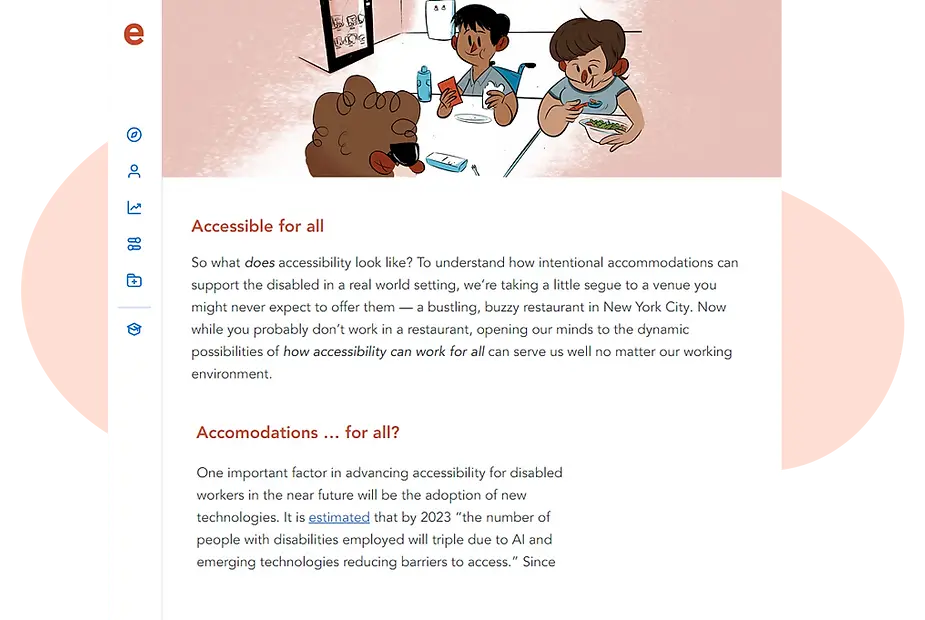
A screenshot on Accessibility, a lesson from Ethena's DEI training course
DEI initiative mistake # 3: Tasking employees to carry the load
You task a select few employees (often without their consent) with the responsibility of pushing forward DEI initiatives.
I want to have a moment of empathy here. If you don’t know what you’re doing, it’s natural to start by asking someone from a member of the community you’re trying to support for help.
And while that isn’t necessarily a bad thing — after all, a critical component of effective DEI initiatives is listening and learning from each other — it can quickly become a problem if you’re placing an unreasonable amount of responsibility on someone who didn’t ask for it, and who is maybe already dealing with their own challenges. You know, like the ones you’re asking them to help you solve.
The flipside of that is trying to solve everything by yourself. Maybe you go the other extreme and decide that only HR is responsible for tackling DEI challenges, and they shouldn’t lean on anyone else for support because, after all, they’re the only ones who have DEI explicitly listed in their job description.
But here’s the thing: That won’t work either. Because the whole point of DEI is that you need to consider and explore a diverse set of life experiences, challenges, and perspectives to get it right. And as diverse as your teeny tiny HR team might be, they’re not going to be able to represent the full gamut of intersectional identities that make up your employee workforce.
DEI initiative solution # 3
Instead, DEI should be communicated as everyone’s responsibility.
Whether you’re a new hire, a manager, or a member of the leadership team, everyone should have DEI as an element of their job description. Because when it really comes down to it, everyone has the power to negatively impact how diverse, equitable, and inclusive your workforce actually is.
Download our Ethena DEI Philosophy template
So what does actual, meaningful change look like when you’re trying to push the dial forward on DEI at your company?
Here are a few examples of real, relevant changes we’ve made at Ethena over the past year:
- Adjusting meeting times (including team activities) to be more inclusive of different time zones and caregiver obligations
- Company-wide interview training with an emphasis on DEI best practices
- Adding name pronunciations and pronouns to our HRIS employee profile pages
- Creating a DEI Slack channel where all employees can share DEI-focused ideas, celebrations, questions, etc
- Salary transparency incorporated into all job descriptions and performance reviews
- Adjusting our health benefits offerings to meet a wider spectrum of personal, family, and health needs
- Rolling out a robust suite of management trainings, job level definitions, and performance management resources for all employees, with an emphasis on making sure that all employees receive equitable support in their career journey with Ethena
We’ve also committed to transparency around our internal representation, periodically sharing our demographic breakdown by race and gender across multiple data cuts, including: all employees, the executive team, and managers.
If you want to learn more about how you can apply more meaningful and impactful DEI efforts across your company, check out our DEI philosophy! We’ve been sharing it company-wide with our employees for the past few years so that everyone knows how we think about DEI, what we’re doing about it, and what role they play in these efforts. You are welcome to copy it, borrow it, or use it to model your own (successful!) DEI initiatives after.
Plus, it’s a great way to open ourselves up to feedback on our approach!
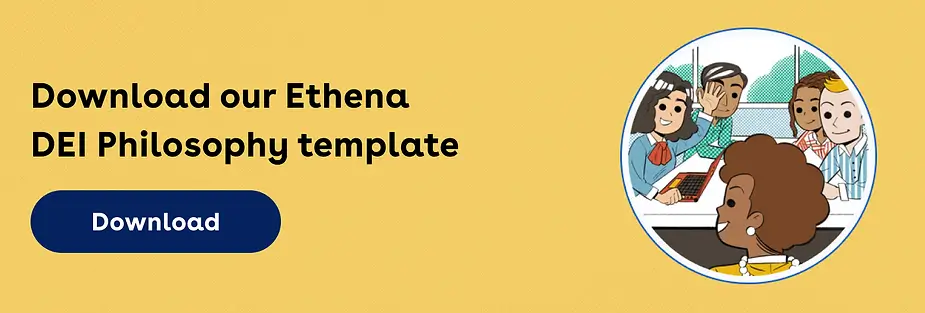
Ethena is a modern compliance training platform that delivers current, cringe-free content that employees actually enjoy. Our course on Diversity, Equity, and Inclusion brings the complexities of bias to life through thoughtful real-world examples, dynamic multimedia, and actionable next steps. Talk to a member of our team to see if Ethena is right for your company.


